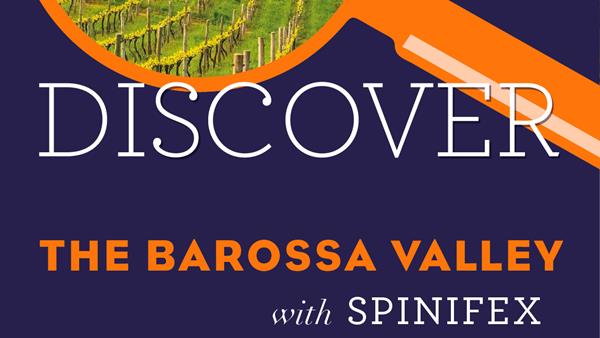Discover Sauternes with Château Guiraud
With idyllic stone homes and rows of vines lining the region’s subtle hills, Sauternes is home to the world's finest sweet white wines. From notable Châteaux flanked by unspoiled nature to the honey-gold wine style it became famous for, Sauternes is an understated display of France’s rich historical and gastronomical heritage, often with wonderful stories to tell – and only a mere 40-minute drive from Bordeaux.
Sauternes, Bordeaux, France – the region in context
Just like politics, art and religion, the world of wine can feel dauntingly complex; especially those from the Old World, with Bordeaux being a prime example. “Bordeaux is the largest fine wine district on earth,” Jancis Robinson and Hugh Johnson write in their latest edition of The World Atlas of Wine. A vast region with an impressive range of wines, spanning from lesser-known appellations all the way to the highest-ranked cru.
The diversity in character and style is due to the varied soils and climate, and to the care and ability of the people who make the wine. Not only that, but it is one that produces quality bottles in high quantities. And yet, despite all this, only about 8% of the wine produced in Bordeaux is white – 3% of which is made in Sauternes.
This can be (partly) explained by Sauternes’ location. The region of Bordeaux is divided by the Gironde estuary, creating the Left Bank and the Right Bank. And depending on which side of the river you are, there will be different grapes, soils, and rules. Sitting on the Left Bank, the Sauternes appellation is made of five communes: Sauternes itself, Barsac, Preignac, Bommes and Fargues.
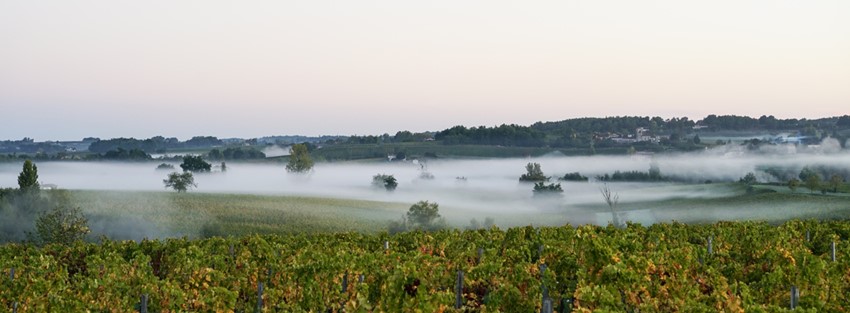
At the southern tip of Graves, vineyards spread across gentle hills and enjoy a mesoclimate of morning autumn mists that linger into the following day, unless burnt off by warm sunshine. The mists are caused by the cool, spring-fed waters of the Ciron River meeting the warmer tidal Garonne, resulting in an ideal environment for the growth of botrytis cinerea. This fungus feeds on the water in ripe grapes, dehydrating them and leaving sweet, intensely flavoured, and shrivelled fruit.
Terroir and noble rot: each vintage to their own
Noble rot is so critical to the production of Sauternes that a number of the best châteaux will not release a vintage every year, and the grape juice is sold. And for good measure, the AOC rules state that every single grape that goes into the wine, needs to be affected by botrytis!
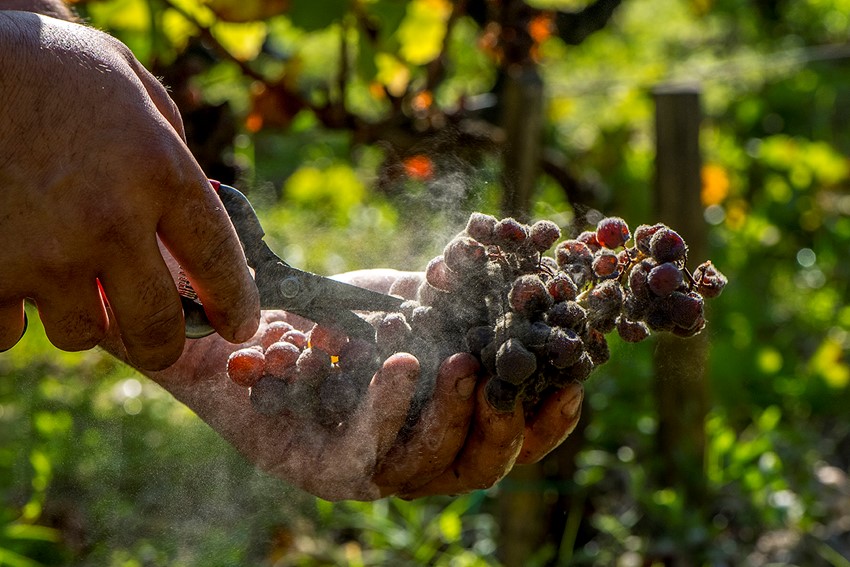
Botrytised grapes
The climate of Sauternes is incredibly unique – however, not always consistent. The conditions for noble rot to form are awfully specific: during autumn mornings, the aforementioned rivers form a mist, which will then rise up and blanket the best located vineyards, in a uniform manner. These damp mornings need to be followed by warmer, sunny, and dry afternoons, in order to create botrytis cinerea, making Sauternes one of the riskiest and least reliable wines to produce. But for the vintages in which weather conditions are just right, Sauternes is home to unforgettable wines.
The quality of the wines themselves arises from the combination of a long and very fresh growing season and the very late arrival of botrytis on perfectly ripe grapes. The result? A complex play of aromatics, with an intense and bright, almost electric acidity, and the richness, opulence and concentration that comes from the very noblest of noble rots.
A little bit of history
The history of sweet wine production in Sauternes likely originates in the 17th century, when Dutch merchants arrived to the port of Bordeaux. Not only did they favour white wines, but their Northern European consumer base also preferred them sweet. And so, they started producing a wine known as vins liquoreux, by adding sugar syrup and fruits.
Still and all, many would argue that the world’s greatest inventions are the result of fortunate accidents – and the Sauternes as we know today are no exception. There are two accounts in the mid-1800s that tell of two châteaux owners, who accidentally let their grapes hang on the vines a little too long, causing the grapes to rot. Historians doubt these to be the first occurrences of botrytis-influenced wines in Sauternes, as older texts document ‘almost-rotten’ grapes, but we do love a tale. Regardless, botrytis was part of Sauternes’ formula by the time the region was classified in 1855.
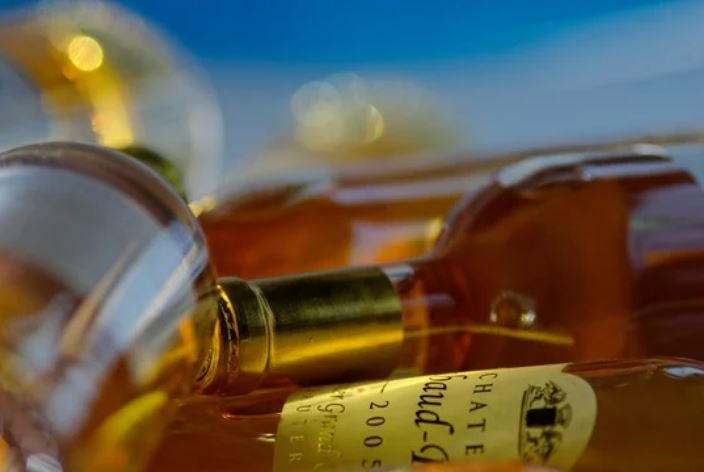
Beyond dessert
Now, whoever challenges the versatility of Sauternes’ sweet wines is missing out on some mouth-watering, lip-smacking, incredibly delicious pairings.
The first thing you need to know is, Sauternes should be served very cold – between 10 to 15 degrees Celsius. The second, is that, although producers may accept that Sauternes is generally enjoyed as a dessert wine… they inwardly disapprove. The Bordelais will have it with herb-roasted poultry, but the brisk, palate-cleansing acidity present in these wines enables them to combine perfectly with pretty much every course of a meal. Foie gras, Asian cuisine, oysters and other shellfish dishes are among the endless combinations – bearing in mind that a savoury pairing will highlight the wine, while creating a beautiful balance on your tongue.
A modern entry into the dry wine market
While it was the liquid gold wines that firmed Sauternes’ place in the wine map… they are famously expensive to produce. Harvesters go through the vineyards time and time again, until every noble rotten berry is accounted for. For context, it is often said that one vine produces one bottle of wine. In Sauternes’ Château Guiraud, one vine produces one glass of wine.
But for almost every château today, a dry wine can offset a portion of the costs – motivating the region’s modern entry into the dry wine market. The consistency of the blanc secs takes away any pressure to release a mediocre Sauternes, strengthening both products.
With no appellation in place for Sauternes Sec, the wines are labelled Bordeaux Blanc. Here, vignerons do not discriminate climatic conditions, or parcels, destined to produce sweet versus dry wine. Which makes sense, considering Bordeaux’s châteaux model and the fact that all sites, although some more than others, have the ability to develop botrytis. Instead, they might choose their dry wine plots based on varietal composition or vine age – typically setting aside the older vines for Sauternes – and are often selected before the growing season, rarely changing from vintage to vintage.
One may ask if, and how, dry wines from Sauternes are different from any other White Bordeaux grown in a different appellation – to which the answer is fairly simple. More often than not, vignerons allow some influence of noble rot in their dry wines, providing a subtle textured and honeyed quality, with intense aromas and character. Château Guiraud, for example, takes it one step further, having its ‘G’ wine go through fermentation and maturation in barrels that were first used to make sweet wine.
Château Guiraud
Château Guiraud is a renowned Sauternes property, and one of only two 1er Cru Classé in the appellation. Named after a Bordeaux négociant, Pierre Guiraud, who purchased the estate in 1766, the château has Canadian Hamilton Narby to thank for its global success, as it was he who transformed it into one of the very finest Sauternes properties, after acquiring it in 1981. With quality at the heart of what they do, and renown for their natural approach to viticulture, in 2011 the château became the first ever Grand Cru Classé to be certified organic.
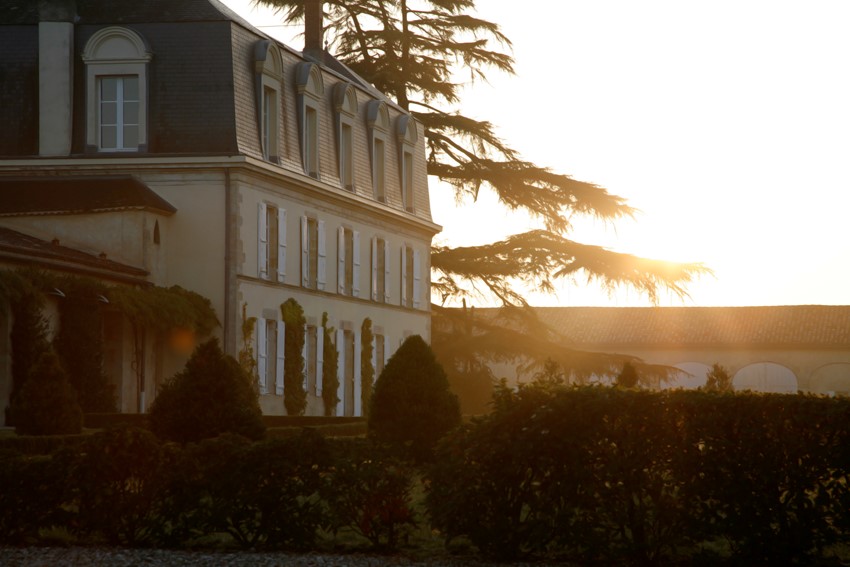
Their 100ha vineyard is planted with 65% Sémillon and 35% Sauvignon Blanc, harvested in tries, and with the juice fermented in oak barrels. The wine is then aged in oak casks (90% new), for 2 years. The wines are decadently rich and are undoubtedly among the finest wines being produced in Sauternes today.
À la table! La Chapelle Guiraud
Recent years have seen Sauternes’ wine-producing châteaux open their doors for vineyard tours, cellar door tasting and Sauternes-inspired dining – and Château Guiraud is no exception. Tours within fields of vines and flourishing gardens combine a discovery of the château’s approach to producing wine while paying attention to biodiversity, with tastings of three of the wines.
But many come for the light-filled, high-ceiling modern restaurant La Chapelle – the first on a 1855 premier grand cru estate – where French dishes are made entirely with local ingredients. Which are largely inspired by the gastronomy of Gascony, perhaps the most renowned region for its authentic, richly flavoured, distinctive cuisine.



